 Petzlover
PetzloverIrish Staffordshire Bull Terrier is originated from Ireland but Old English Terrier is originated from United Kingdom. Both Irish Staffordshire Bull Terrier and Old English Terrier are having almost same height. Both Irish Staffordshire Bull Terrier and Old English Terrier are having almost same weight. Both Irish Staffordshire Bull Terrier and Old English Terrier has same life span. Both Irish Staffordshire Bull Terrier and Old English Terrier has almost same litter size. Irish Staffordshire Bull Terrier requires Low Maintenance. But Old English Terrier requires Moderate Maintenance
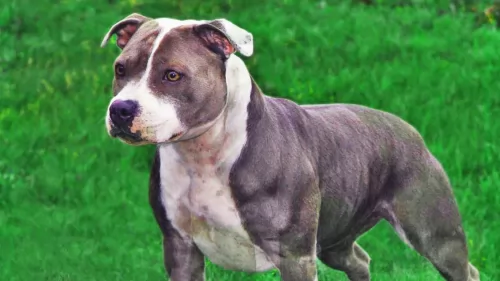 The Staffordshire Bull Terrier comes from Staffordshire, England, but the Irish Staffie was later developed by Irish breeders so its origin is essentially Ireland. They were developed from bulldogs and different terrier breeds.
The Staffordshire Bull Terrier comes from Staffordshire, England, but the Irish Staffie was later developed by Irish breeders so its origin is essentially Ireland. They were developed from bulldogs and different terrier breeds.
The dog was always used for bull baiting, but when this sport died out, the Irish breeders wanted to create a taller, leaner dog suited for dog fighting. When dog fighting was banned the breed became rare again, but today it has been restored and is essentially a popular companion pet.
Known also as the Black Terrier, by the 18th century, the Old English Terrier was available as a rough-coated dog as well as a smooth-coated dog.
The dogs were established in England. The dog was developed to work and by the 19th century the Old English Terrier was to be found all over the world.
The dog was developed based on the work it was required to do, leading to variations in the coat texture, the body and size. The Old English Terrier is recognized today by the National Terriers Club LLC.
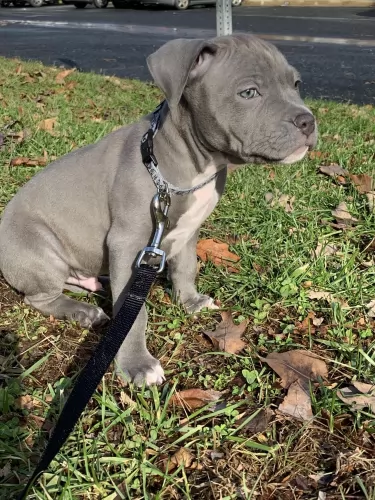 The Irish Staffordshire Bull Terrier is a medium sized pure-breed dog standing at roughly 43 to 48cm and weighing anything from 14 to 18kg.
The Irish Staffordshire Bull Terrier is a medium sized pure-breed dog standing at roughly 43 to 48cm and weighing anything from 14 to 18kg.
He has a short, smooth coat which can be a mix of colors such as fawn, tan, black or brindle. The coat can also be bi-colored such as in fawn and white or black and white. He is a powerfully built dog with short legs which are fairly wide apart.
He has a large head and short muzzle with powerful jaws.Sometimes when he pants after a hectic bout of exercise he gets a comical, grinning look on his face. The ears are semi-erect, semi-upright and he has a long tail.
Your Irish Staffy is a feisty, confident dog that has been known to have a temperament which leads towards aggression. It is why he should be trained and socialized to make him more amicable and obedient. He is an intelligent and alert dog, so won't have difficulty with training.
A well trained and socialized Irish Staffordshire Bull Terrier will get on well with children in the home as he is a playful, jovial dog, always ready for a game.
The Old English Terrier is a working dog, a sporting terrier known for his athleticism. This is a vibrant dog, both physically and mentally, and the dog will require plenty of physical exercise as well as mental stimulation.
If you go to a reputable pet shop, you will find many stimulating toys for such a clever dog. He is also social and friendly and makes a wonderful pet.
Your Old English Terrier stands at between 30 – 45cm and weighs between 6 and 15kg. The face of the dog is wedge-shaped and the eyes are set wide apart. The ears are erect and the tail has been docked but is left long these days.
The coat of the dog can be either rough or smooth and it is available in solid black or white or a black and tan mix.
The Old English Terrier is a working and sporting terrier. He makes a wonderful companion pet. He is an intelligent, boisterous type of dog and early training and socialization are necessary to make him obedient and more amicable around people and pets.
They are loving with their human family, but because they require such vigorous exercise, they are better suited to life in the countryside as opposed to living in a cramped space in the city.
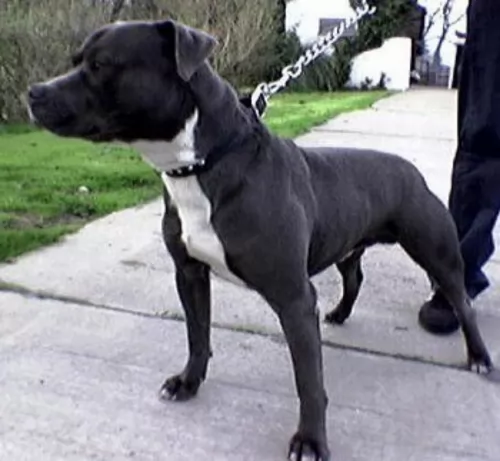 The older Irish Staffie has always been an aggressive type dog used for fighting, but today the modern breed is capable of being a splendid, entertaining, amicable pet with an even temper. He is feisty for sure, being brave, fearless, loyal and loving with his human family members.
The older Irish Staffie has always been an aggressive type dog used for fighting, but today the modern breed is capable of being a splendid, entertaining, amicable pet with an even temper. He is feisty for sure, being brave, fearless, loyal and loving with his human family members.
All it requires with this dog is to have a firm, loving upbringing, some training and socialization as well as good food and plenty of love and attention. Many dogs get labelled wrongly because of the humans that rear them the wrong way. When done correctly, the Irish Staffordshire Bull Terrier promises to be a wonderful, loving, loyal pet.
Your Old English Terrier is a working dog and while he is known to be independent and sometimes quite stubborn, he is intelligent and trainable.
He should be trained and socialized and then he becomes a great family pet, being amicable with children and other pets. He is a good natured pet but he has lots of energy and will rely on you to provide him with walks and games, whether you live in the city or the countryside.
Give him the right upbringing and you can be assured of the most splendid pet and companion.
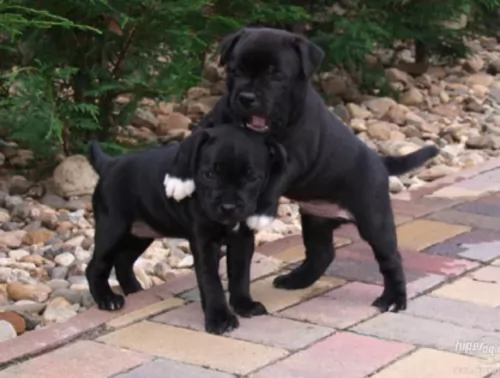 The Irish Staffordshire Bull Terrier, just like with any other dog, has a good chance of living a good number of years if he is fed properly. He can live to be anything up to between 10 and 16 years.
The Irish Staffordshire Bull Terrier, just like with any other dog, has a good chance of living a good number of years if he is fed properly. He can live to be anything up to between 10 and 16 years.
Say what you like, good nutrition and the lifestyle you provide for your Irish Staffie will determine how long he lives. An unhappy dog that has to beg for love and attention won't do well. Your Irish Staffie can live to a ripe age but he is still at risk for certain health problems.
These mast cell tumors are graded according to their location in the skin. Certain dogs like Boxers and bulldogs are more susceptible to mast cell tumors than other breeds, and the Irish Staffie isn't immune either. Most times the tumor develops in an older dog, though young dogs have also been known to develop the tumor. These tumors can be inactive for a while and then experience some rapid growth with some redness and fluid build up. Immediate veterinary intervention will be required.
There are some health problems with a dog that can be inherited, but some illnesses develop because of bad lifestyle and bad diet along with lack of exercise.
Your Old English Terrier can live to anything from 10 to 14 years of age, but there are always some common dog diseases that you may want to be aware of.
Dental disease, skin allergies, hip dysplasia, cancer, epilepsy, bloat and eye diseases are just some of the diseases that are highly unlikely, but which can be worrisome for your pet.
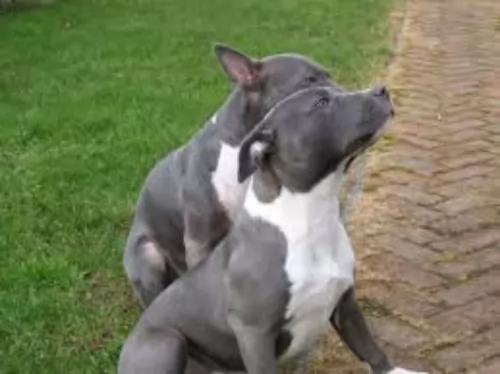 The Irish Staffie is an active dog, who is always game for anything. He will certainly need active owners who include him in all their activities. He has a lot of stamina and endurance and will want to join you on your walks, hikes and swimming. Ignoring his exercise needs can turn him into a restless, unhappy, frustrated, destructive dog.
The Irish Staffie is an active dog, who is always game for anything. He will certainly need active owners who include him in all their activities. He has a lot of stamina and endurance and will want to join you on your walks, hikes and swimming. Ignoring his exercise needs can turn him into a restless, unhappy, frustrated, destructive dog.
Having a short, smooth coat means your Irish Staffie being a low maintenance dog. He does shed a bit so his coat will need to be brushed at least twice a week to get rid of all those loose hairs. Its always a good opportunity to check him for fleas and ticks too.
If the short coat gets too dirty, a wipe down with a damp cloth can keep the coat bright and shiny. Certainly avoid bathing him too often as this can aggravate the skin.
Check his nails and trim them if they get too long. Check his ears and teeth as these are all problem areas which can contribute to your dog becoming ill.
Your Irish Staffie is such an energetic dog that he will need excellent food that promotes this energy. Whether you buy him the best commercially manufactured kibble, you want to also add in some home-made food such as cooked chicken, rice and vegetables as well as including some raw meat occasionally. The food you provide your Staffie with needs to be full of vitamins and minerals to avoid illness. Always make sure he has access to fresh, cool water.
Looking after your Old English Terrier is easy, whether you choose the short- or long haired breed, requiring you to brush him twice a week to remove those loose hairs. Check in and outside the ears for ticks and fleas and check around the eyes for infections.
Always run your hands over your dog to make sure there are no unusual lumps which could be indicative of cancer.
Make sure your pet has a nice dry, warm place to sleep, and if he is outdoors, make sure he has a spot to lie down in that is out of the sun and rain.
He is an active dog and will require a walk each day as well as ball- and rope games.
Every dog will benefit from a high quality diet, both commercially manufactured food and home-made food. Dogs want their meals to be simple, tasty, consistent and delicious.
Dry kibble needs to be of a high quality and you can add in simple home-made food to his kibble and which is simple – boiled chicken, brown rice or pasta and vegetables such as spinach, sweet potatoes and carrots. When you can afford it, some raw meat added into the kibble will be a welcome treat.
Such a simple diet will ensure you don’t battle with your dog’s digestion and it will keep him bright-eyed and healthy. Ensure a constant supply of fresh, cool water.